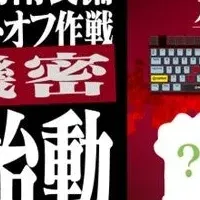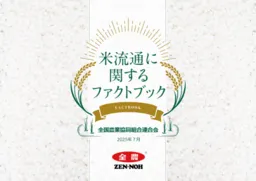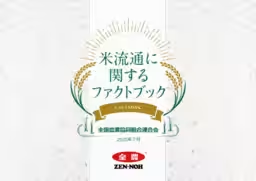

Zennoh Publishes Comprehensive Factbook on Rice Distribution in Japan
Zennoh Publishes Comprehensive Factbook on Rice Distribution in Japan
On July 8, JA Zennoh made an important contribution to the understanding of rice production and distribution by releasing a detailed factbook on its official website. This factbook, titled "Rice Distribution Factbook," serves as an essential guide containing foundational information about various aspects of rice, from production to market dynamics.
The factbook encompasses a multitude of topics, including the mechanisms of rice production, distribution chains, pricing structures, and the critical roles played by agricultural cooperatives and wholesalers, as well as the reserve rice systems in Japan. This resource aims to enhance public understanding of the current state of rice production in Japan and the initiatives taken by JA Zennoh.
Insights into the Factbook
The factbook is structured in a user-friendly way, comprised of multiple sections dedicated to different elements of rice production and distribution. Key topics addressed in the document include:
- - An overview of rice distribution: This section delves into how rice is distributed throughout the country, touching on logistical challenges and innovative solutions.
- - Trends in rice cultivation area and production volume: An analysis of how these factors have evolved over time, providing insights into agricultural practices and market conditions.
- - The development of agricultural producers: The factbook discusses the aggregation of farming entities, highlights issues related to aging producers, and examines how these dynamics impact the industry.
- - Costs associated with rice production: A thorough breakdown of production costs, pricing strategies, and the relationship between these elements and consumer demand.
Additionally, the factbook shares the various roles that JA Zennoh and its partner agricultural cooperatives play in ensuring a stable rice supply, along with information on commodity pricing and government stock policies. Topics related to logistics and distribution challenges are also extensively covered, illustrating how they affect the overall rice market in Japan.
Accessibility
JA Zennoh encourages interested parties, including researchers, policymakers, and the general public, to utilize this factbook as a comprehensive reference. It is readily available for viewing on the JA Zennoh official website, highlighting the organization's commitment to transparency and education in the agricultural sector.
For those interested, the complete "Rice Distribution Factbook" can be accessed here.
The publication of this factbook aligns with JA Zennoh's mission to support agricultural producers and enhance food security in Japan. By spreading awareness and providing essential data, JA Zennoh aims to foster a deeper understanding of the critical elements influencing rice production and distribution.
In conclusion, JA Zennoh's "Rice Distribution Factbook" stands as a vital resource for anyone seeking to understand the complexities of Japan's rice industry. Whether you are a stakeholder in the agriculture sector or simply a curious consumer, this factbook offers valuable insights into one of the country's staple foods.

Topics Consumer Products & Retail)










【About Using Articles】
You can freely use the title and article content by linking to the page where the article is posted.
※ Images cannot be used.
【About Links】
Links are free to use.